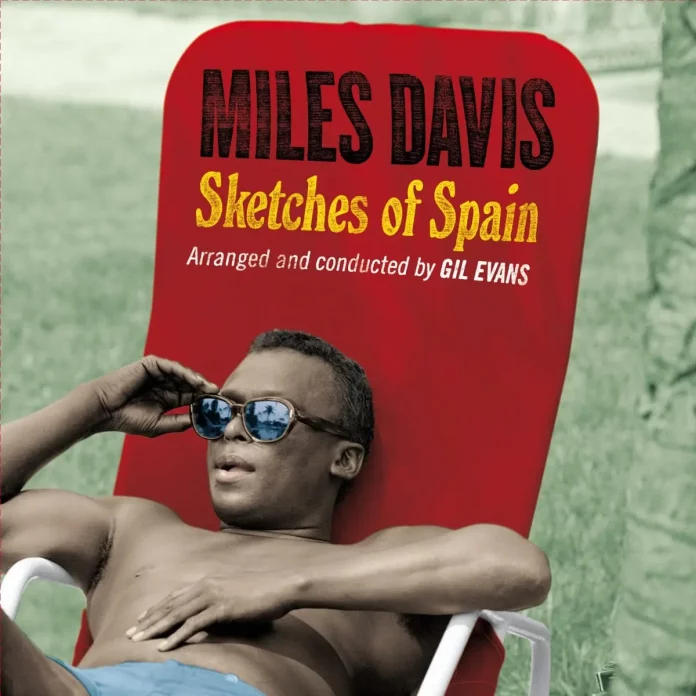The years 1957 to 1960 saw Miles Davis bring about what came to be called “modal” jazz – the use of scales and static chords in place of the constantly moving harmonies, or “changes” of bebop. His progress through these years, as captured on record, includes the album Milestones, his soundtrack music for the French film Ascenseur Pour L’Echafaud, the classic Kind Of Blue and three orchestral albums: Miles Ahead, Porgy & Bess and this one, Sketches Of Spain.
Almost certainly, Sketches‘ great attraction at the time was Concerto De Aranjuez, the second movement of Joaquin Rodrigo’s composition of that name, reworked by Gil Evans. It takes up most of the first side, with Miles soloing over a background of ever-changing tonal patterns, colours and depth. Significantly, the harmonies change little, if at all for long periods, and percussion plays an important role.
Miles’s modal interest had found the perfect partner in the music of Spain, with its rich mixture of East and West. His own playing throughout takes on the air of a mournful cry, or incantation.
The B-side pieces, The Pan Piper, Saeta and Solea (all Gil Evans compositions) and the short Will O’ The Wisp that closes the A-side (Manuel de Falla, arr. Evans) are similar but much looser in form and at times quite wild. Ian Carr, in his biography of Miles Davis, refers to them as a “step away from the Western concept of orchestral function” and its “machine-like precision”.
These pieces are further than a mere step away from what listeners in 1960 might have been expecting. The band in Saeta, for example, sounds like a marching band of the kind to be heard in Spanish villages on religious holidays. This alternates with passionate declamations from Miles against the subdued background of a single chord. The whole thing is enlivened by the use of stereo sound, in which the band, now magically two bands, can be heard marching to left and right. This is perhaps the first creative use of stereo to add movement to recorded music. No wonder it took Teo Macero, the producer, six months to edit the tapes.
Sketches Of Spain baffled a lot of listeners in 1960, as Miles’s sudden changes of direction often did, but time has made it a classic. Not having heard it for a disgracefully long time, I must admit it has captivated me more this time than it did originally, especially the B-side. The bonus track, Spring Is Here, is a beautiful rendering of a beautiful song, but more than somewhat out of place here. The shiny-pink vinyl pressing of course sounds clearer and sharper than my old (French) pressing, c. 1968. Don’t think much of the cover, though. They could at least have found a better picture of Miles.
Discography
(1) Concerto de Aranjuez; (2) Will O’ The Wisp; The Pan Piper; Saeta; Solea; (3) Spring Is Here. (48.25)
Davis (t, flh) with orchestra arranged and conducted by Gil Evans. (1) NYC, November 1959. (2) NYC, March 1960. (3) Carnegie Hall, NYC, 19 May 1961.
20th Century Masterworks 350234
















